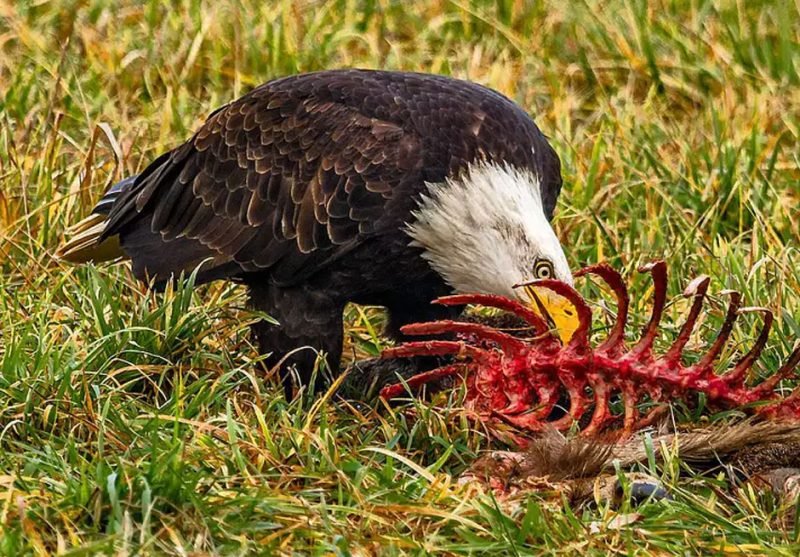
Carrion, which refers to the dead and decaying flesh of animals, serves as a food source for many carnivorous and omnivorous animals and birds. In this article, we will take a closer look at carrion birds – the birds that feed on carrion.
What is Carrion?
Carrion refers to the flesh of an animal that has died from causes other than being killed by the animal that consumes it. It can come from a variety of sources and can include small rodents, larger mammals, and even whales. Common sources of carrion include predator kills, hunting discards, vehicle kills, accidental deaths, natural deaths, and beach strandings.
As carrion ages, it emits a foul, rancid smell caused by bacterial growth, making it unsuitable for human consumption. However, animals and birds have different digestive systems and better tolerance for old meat, making it a valuable food source for them.
Birds that Eat Dead Animals
A wide range of birds feed on carrion. Some birds are regularly known as carrion-eaters, including vultures, buzzards, condors, caracaras, eagles, hawks, and other birds of prey, crows, ravens, and other large corvids, gulls, skuas, and terns. Depending on the size of the carcass and how much activity is around it, other omnivorous birds such as jays, pigeons, roadrunners, and hoopoes may also take advantage of carrion. Even some seabirds, including fulmars, may scavenge carrion from beached carcasses.
Sources of Carrion
Scavengers do not discriminate about where they get their next meal. They feed on any source of carrion they can find, which includes predator kills, hunting discards, vehicle kills, accidental deaths, natural deaths, and beach strandings.
Hazards of Carrion
Carrion is not without risks. Depending on how the animal died and how long it has been deceased, carrion can pose several hazards to birds, including disease transmission, lead contamination, poisoning, attacks by other predators, and vehicle collisions.
To deal with these risks, carrion birds have adaptations and strategies. Stronger stomach acids can kill many disease-causing bacteria, and birds that regularly feed on carcasses, such as vultures, often have bare faces and heads to minimize insect and bacteria infestation. Smaller birds that eat carrion may feed in flocks, and large numbers can help deter other predators from taking over the carcass. Birds may also gorge on carrion, storing the meat in their crops and leaving it quickly to digest in a safer place.
Carrion birds cannot detect lead contamination or other toxic contamination in a carcass, and many vultures and large raptors are killed each year by this type of poisoning. To reduce this threat, switching to non-lead ammunition can help. Drivers should also be aware of carcasses alongside roads and slow down to avoid hitting any feeding birds.
Conclusion
Carrion birds play an important role in the ecosystem as scavengers, helping to prevent the spread of diseases and keeping the environment clean. They are also indicators of ecosystem health and can signal potential environmental hazards. Understanding the role of carrion birds in the ecosystem is crucial to their conservation and protection.

